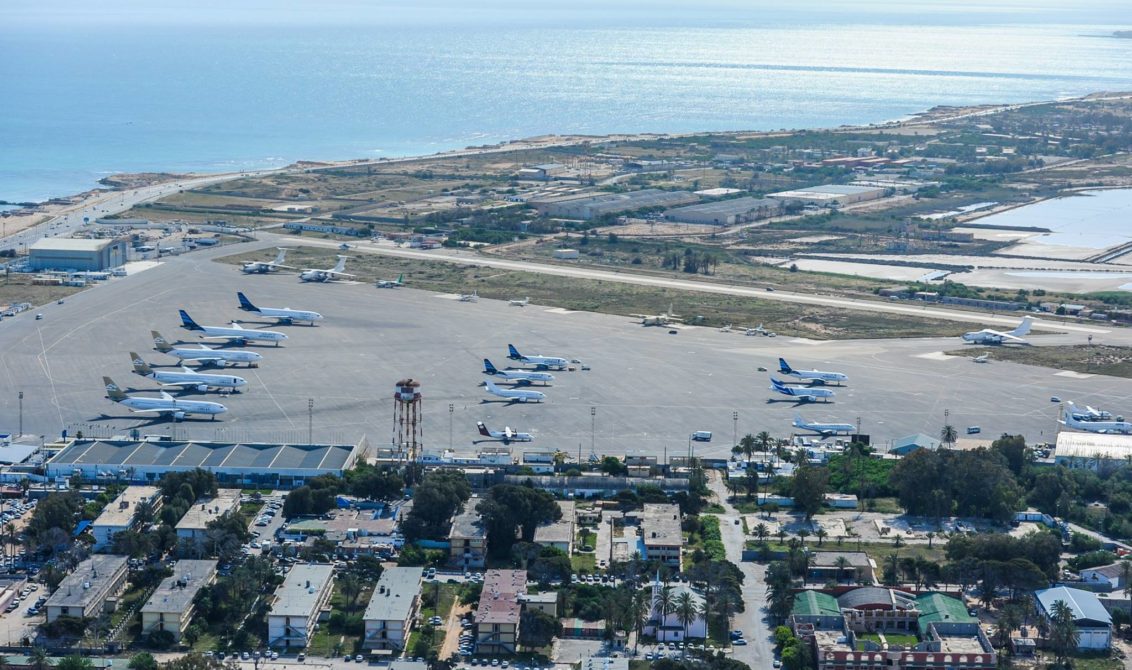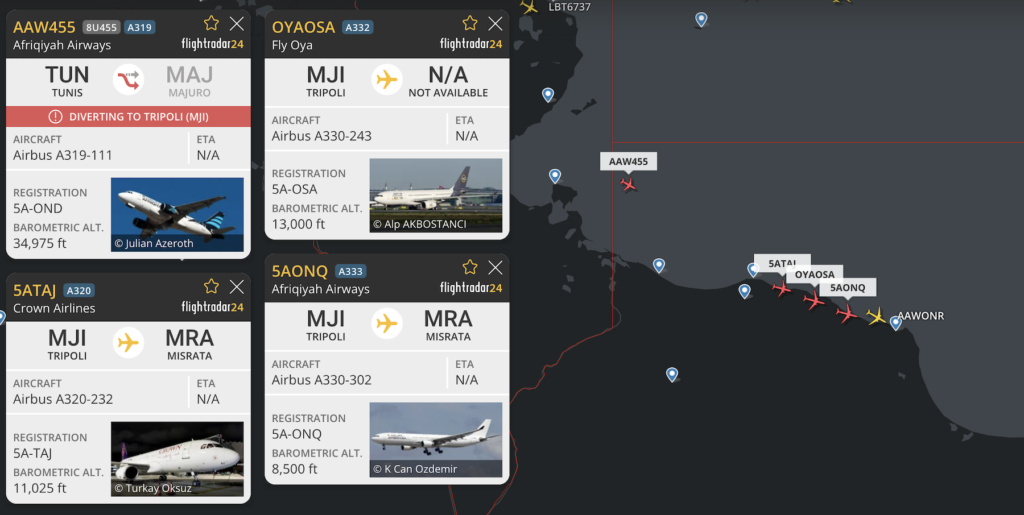Ops Alert – August 14, 2300Z
- A mass evacuation of aircraft is taking place at the moment from Tripoli, including a number of A330 and A320 aircraft from both the largest carrier (Afriqiyah) and smaller operators. Inbound flights are also diverting, and the Libyan government aircraft, a King Air 350, is also being taken out of Tripoli. Almost all aircraft are being repositioned to Misrata (HLMS) – with approximately 25 aircraft being moved.
- The reason for the evacuation is violent clashes involving gunfire taking place at Tripoli Mitiga airport (HLLM), as well as on road leading into Tripoli itself. Earlier on Monday night the head of ‘444 brigade’ that controls much of Tripoli, was detained at Mitiga airport by the Special Deterrence Force. The resulting risk to aircraft operations was deemed sufficiently high to begin the removal of aircraft to a safer location.
- This situation highlights the instability of the security situation in Libya. With the airspace closure in Niger last week, routes over Africa have become very limited, and Libya/the Tripoli FIR may seem a tempting alternative.
- Operators considering a Libya overflight should consider routings very carefully. This is the most significant aviation security event in Libya in the last few years, and highlights the ongoing risk to operations.
Refer to safeairspace.net/libya for the background, and ops.group/blog/2023-is-libya-safe-to-overfly-yet for more information.
A timely summary of the risk to civilian operators in the Tripoli FIR, from earlier in 2023, gathered by OPSGROUP from neighboring ATC units:
- The ATM/CNS situation in the HLLL FIR is very basic and from our experience there are issues with communications and surveillance (or the lack of it).
- There is a lot of military activity which is not always known to Tripoli and Benghazi ACCs also due to these communication and coverage issues.
- There are still issues regarding coordination between the Tripoli and Benghazi ACCs. One seems to have certain rules which the other ignores. It is very frequent for example that either one or both reject overflights resulting in significant re-routings which we have to sort out (normally military flights) but not excluding civilian flights – sometimes even Libyan flights.
- We see a lot of remotely piloted aircraft operating in the airspace which as far as we know are not operating in segregated airspace nor are they being controlled by the ATC units.
- Only recently Libyan controllers went on a flash strike informing us that they cannot continue to handle the traffic with no radar equipment.
- The AIS services are not functioning properly and the status of the airports is unknown.
More on the topic:
- More: Libya Airspace Risk: An Idiot’s Guide
- More: Libya Airspace Update Aug 2023
- More: Libya Airspace Update March 2022
- More: SafeAirspace: 2021 Update
- More: Libya Airspace Update Oct 2019
More reading:
- Latest: More face scans at the US border for BizAv flights
- Latest: Greenland NAT Alternates: Dec 2025 Update
- Latest: Mexico Customs Surprises: Pills, Vapes, and Laptop Rules
- Safe Airspace: Risk Database
- Weekly Ops Bulletin: Subscribe
- Membership plans: Why join OPSGROUP?












 Get the famous weekly
Get the famous weekly 





